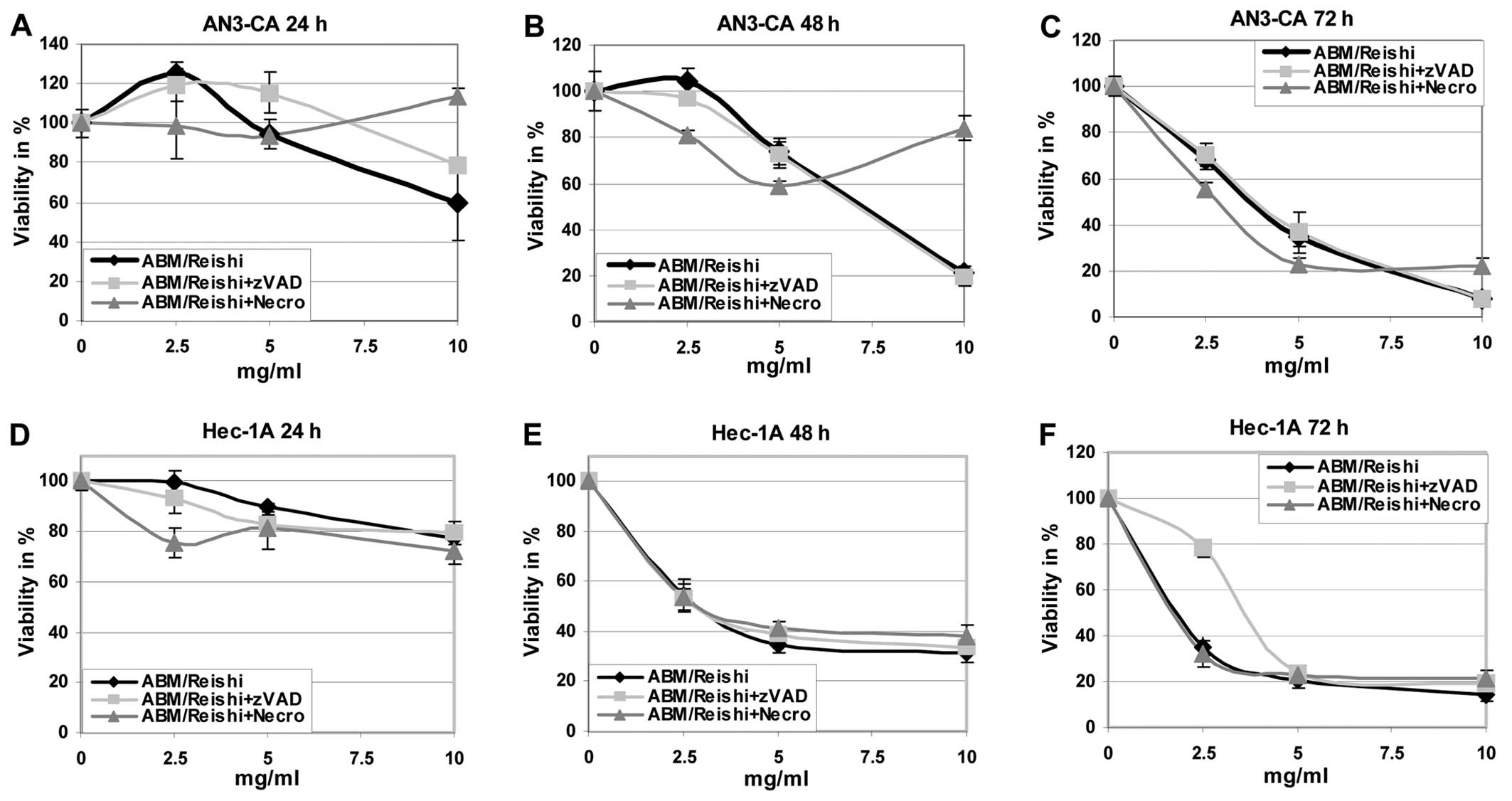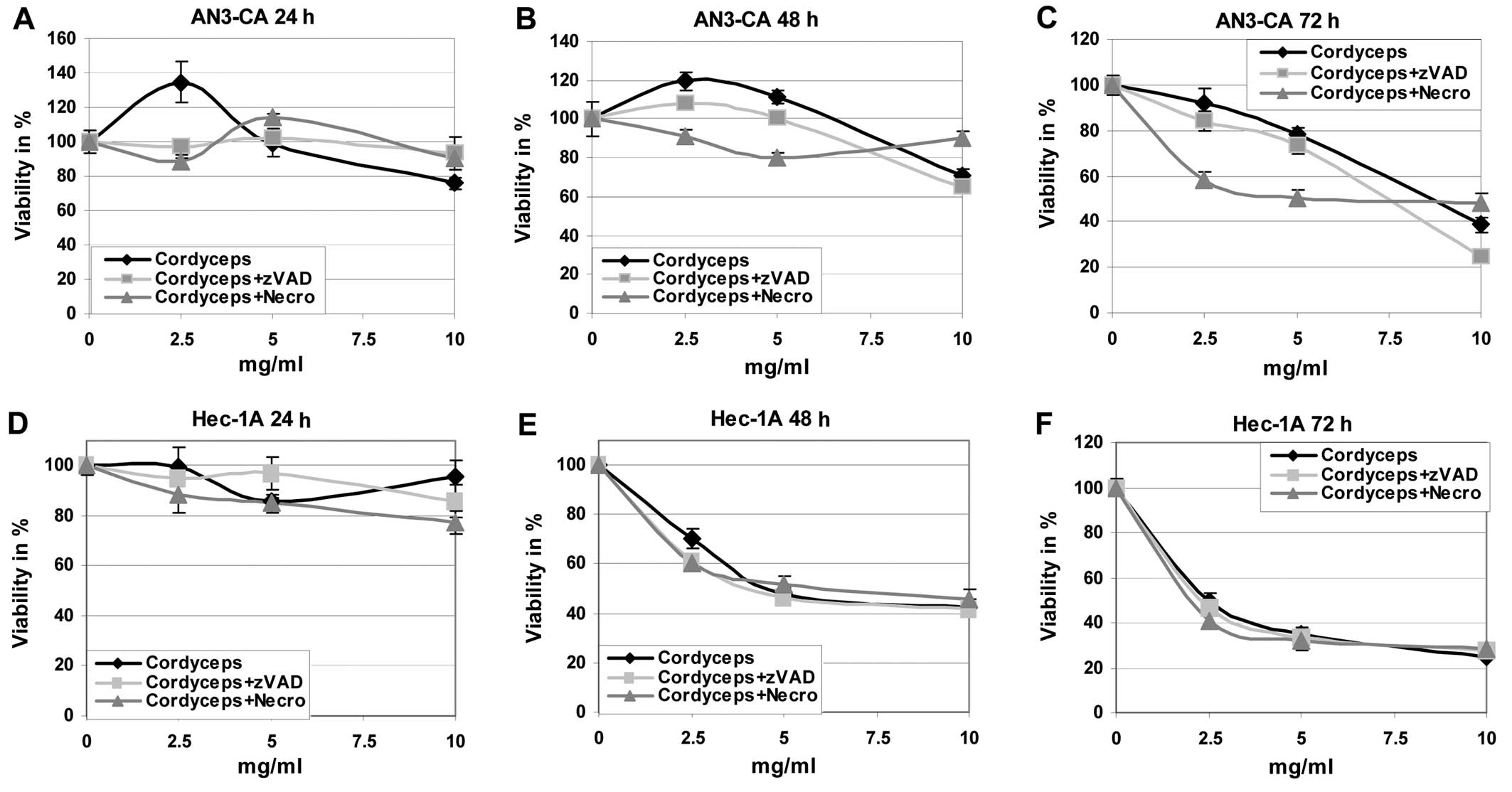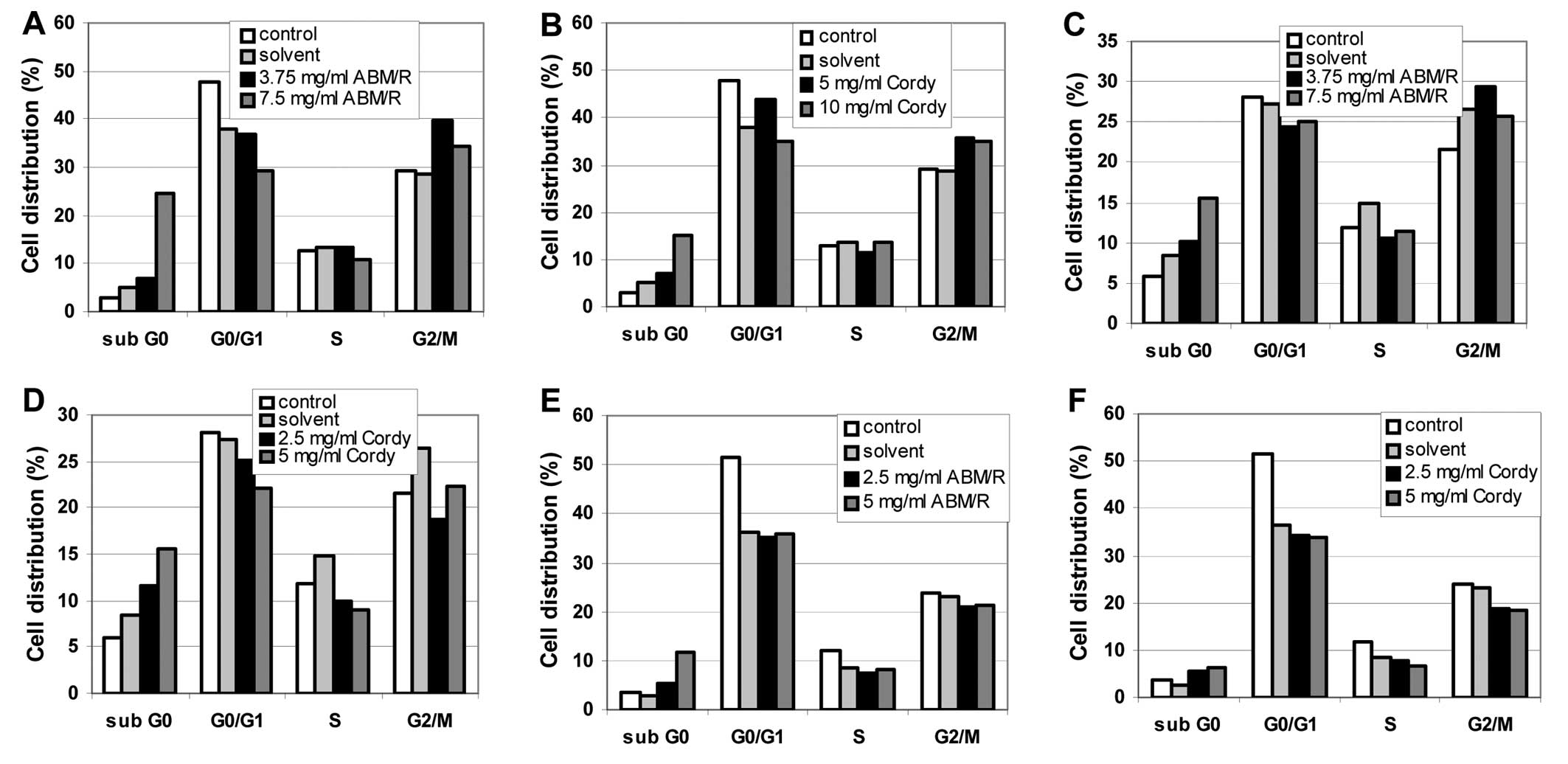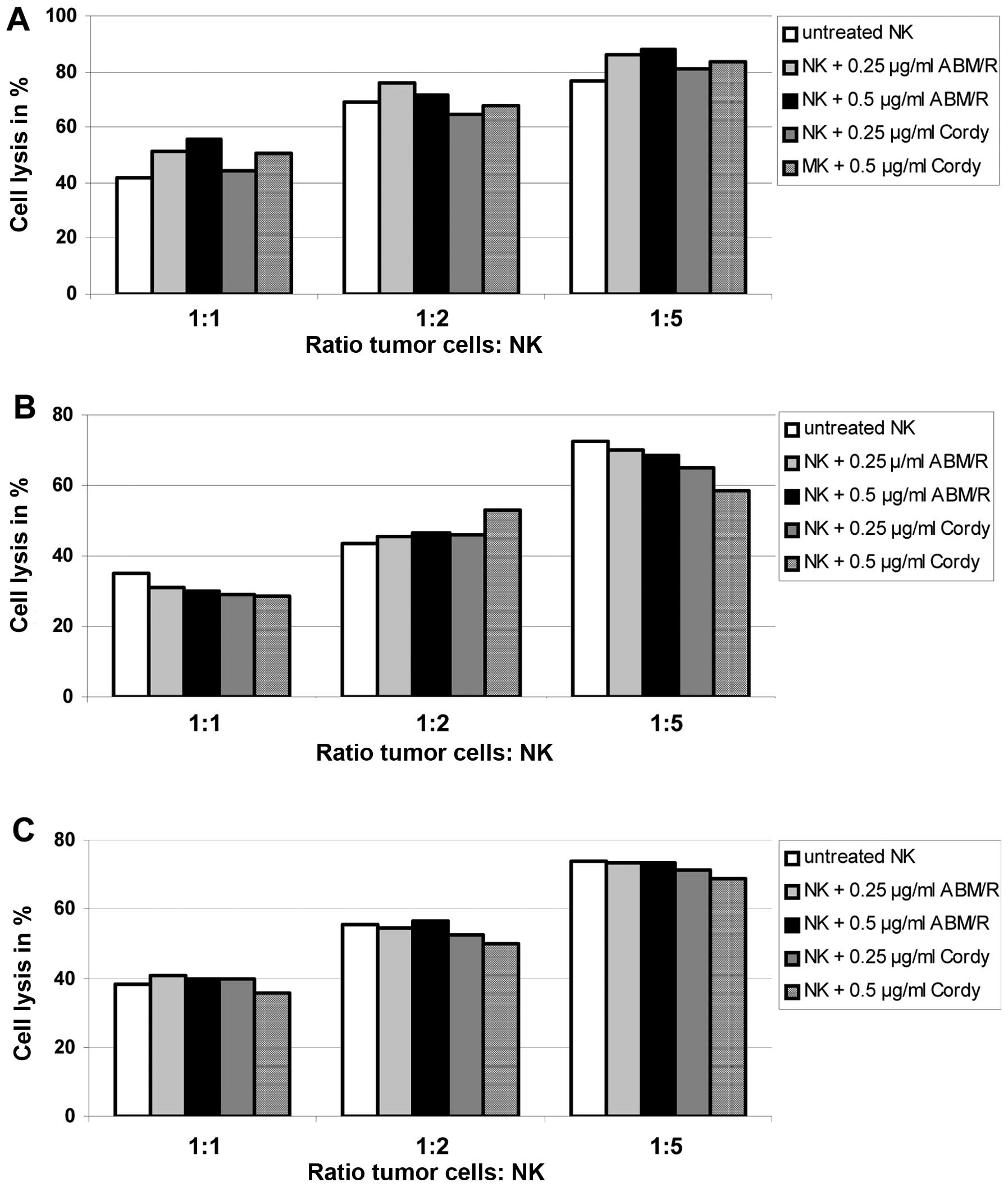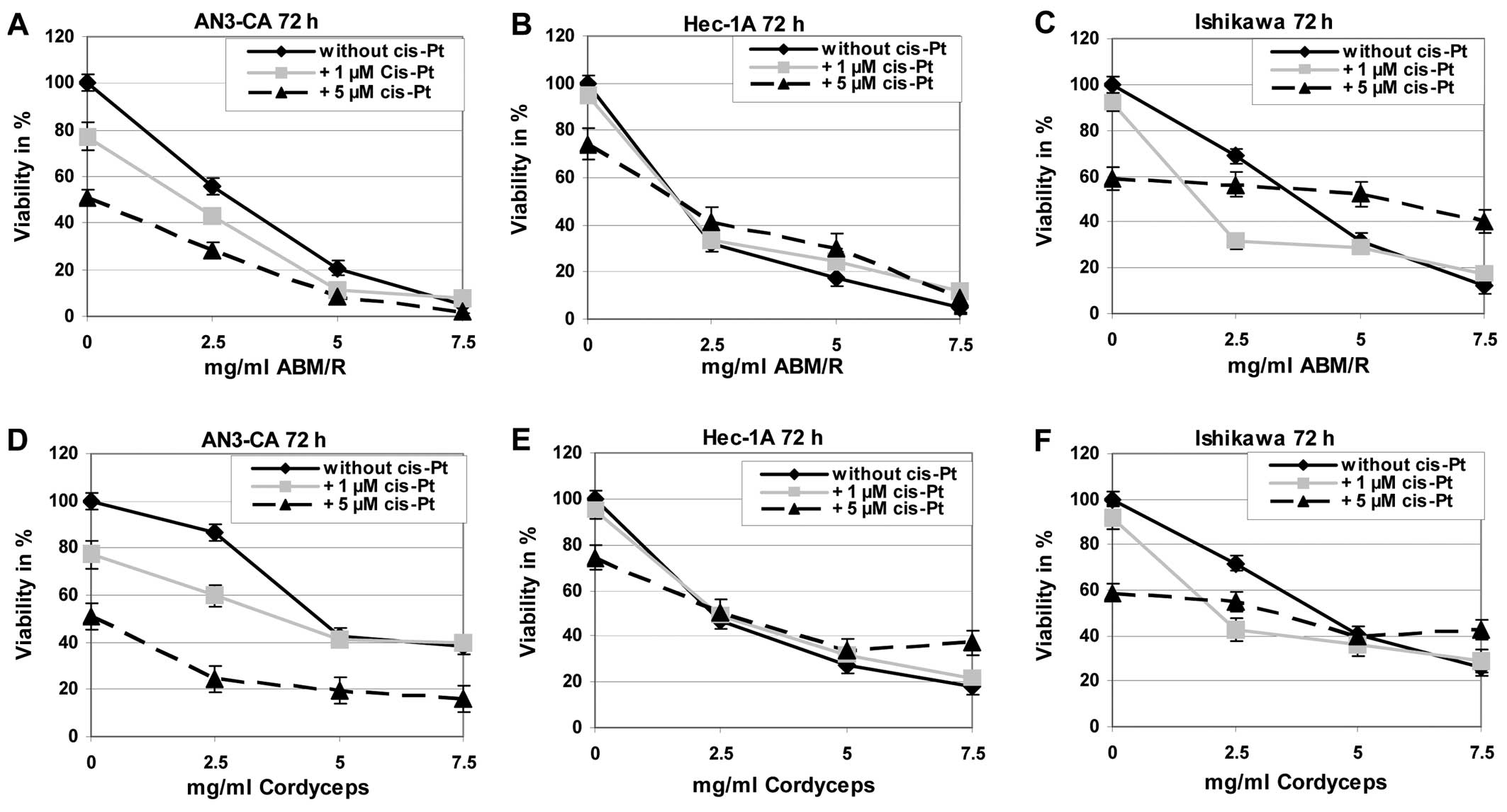|
1.
|
Chaudhry P and Asselin E: Resistance to
chemotherapy and hormone therapy in endometrial cancer. Endocr
Relat Cancer. 16:363–380. 2009. View Article : Google Scholar : PubMed/NCBI
|
|
2.
|
Marnitz S and Köhler C: Current therapy of
patients with endometrial carcinoma. A critical review.
Strahlenther Onkol. 188:12–20. 2012. View Article : Google Scholar : PubMed/NCBI
|
|
3.
|
Patel S and Goyal A: Recent developments
in mushrooms as anti-cancer therapeutics: a review. 3 Biotech.
2:1–15. 2012. View Article : Google Scholar : PubMed/NCBI
|
|
4.
|
Lindequist U, Niedermeyer TH and Jülich
WD: The pharmacological potential of mushrooms. Evid Based
Complement Alternat Med. 2:285–299. 2005. View Article : Google Scholar
|
|
5.
|
Lima CU, Cordova CO, Nóbrega Ode T,
Funghetto SE and Karnikowski MG: Does the Agaricus blazei
Murill mushroom have properties that affect the immune system?
An integrative review. J Med Food. 14:2–8. 2011.
|
|
6.
|
Zhu JS, Halpern GM and Jones K: The
scientific rediscovery of a precious ancient Chinese herbal
regimen: Cordyceps sinensis: part II. J Altern Complement
Med. 4:429–457. 1998. View Article : Google Scholar : PubMed/NCBI
|
|
7.
|
Li SP, Yang FQ and Tsim KW: Quality
control of Cordyceps sinensis, a valued traditional Chinese
medicine. J Pharm Biomed Anal. 41:1571–1584. 2006.
|
|
8.
|
Firenzuoli F, Gori L and Lombardo G: The
medicinal mushroom Agaricus blazei Murrill: review of
literature and pharmacotoxicological problems. Evid Based
Complement Alternat Med. 5:3–15. 2008.
|
|
9.
|
Schmidt BM, Ribnicky DM, Lipsky PE and
Raskin I: Revisiting the ancient concept of botanical therapeutics.
Nat Chem Biol. 3:360–366. 2007. View Article : Google Scholar : PubMed/NCBI
|
|
10.
|
Zhao S, Ye G, Fu G, et al: Ganoderma
lucidum exerts anti-tumor effects on ovarian cancer cells and
enhances their sensitivity to cisplatin. Int J Oncol. 38:1319–1327.
2011.
|
|
11.
|
Chihara G, Maeda Y, Hamuro J, Sasaki T and
Fukuoka F: Inhibition of mouse sarcoma 180 by polysaccharides from
Lentinus edodes (Berk.). Nature. 222:687–688. 1969.
View Article : Google Scholar : PubMed/NCBI
|
|
12.
|
Campling BG, Pym J, Galbraith PR and Cole
SP: Use of the MTT assay for rapid determination of
chemosensitivity of human leukemic blast cells. Leuk Res.
12:823–831. 1988. View Article : Google Scholar : PubMed/NCBI
|
|
13.
|
Hahne JC, Honig A, Meyer SR, et al:
Downregulation of AKT reverses platinum resistance of human ovarian
cancers in vitro. Oncol Rep. 28:2023–2028. 2012.PubMed/NCBI
|
|
14.
|
Traganos F and Darzynkiewicz Z: Lysosomal
proton pump activity: supravital cell staining with acridine orange
differentiates leukocyte subpopulations. Methods Cell Biol.
41:185–194. 1994. View Article : Google Scholar : PubMed/NCBI
|
|
15.
|
Jin X, Gossett DR, Wang S, et al:
Inhibition of AKT survival pathway by a small molecule inhibitor in
human endometrial cancer cells. Br J Cancer. 91:1808–1812. 2004.
View Article : Google Scholar : PubMed/NCBI
|
|
16.
|
Block M, Fister S, Emons G, et al:
Antiproliferative effects of antiestrogens and inhibitors of growth
factor receptor signaling on endometrial cancer cells. Anticancer
Res. 30:2025–2031. 2010.PubMed/NCBI
|
|
17.
|
Tsujimoto Y and Shimizu S: Another way to
die: autophagic programmed cell death. Cell Death Differ. 12(Suppl
2): 1528–1534. 2005. View Article : Google Scholar : PubMed/NCBI
|
|
18.
|
González-Polo RA, Boya P, Pauleau AL, et
al: The apoptosis/autophagy paradox: autophagic vacuolization
before apoptotic death. J Cell Sci. 118:3091–3102. 2005.PubMed/NCBI
|
|
19.
|
Ouyang L, Shi Z, Zhao S, et al: Programmed
cell death pathways in cancer: a review of apoptosis, autophagy and
programmed necrosis. Cell Prolif. 45:487–488. 2012. View Article : Google Scholar : PubMed/NCBI
|
|
20.
|
Amaral C, Borges M, Melo S, et al:
Apoptosis and autophagy in breast cancer cells following exemestane
treatment. PLoS One. 7:e423982012. View Article : Google Scholar : PubMed/NCBI
|
|
21.
|
Jiang J, Slivova V, Harvey K,
Valachovicova T and Sliva D: Ganoderma lucidum suppresses
growth of breast cancer cells through the inhibition of Akt/NF-κB
signaling. Nutr Cancer. 49:209–216. 2004. View Article : Google Scholar
|
|
22.
|
Jin CY, Kim GJ and Choi YH: Induction of
apoptosis by aqueous extract of Cordyceps militaris through
activation of caspases and inactivation of Akt in human breast
cancer MDA-MB-231 cells. J Microbiol Biotechnol. 18:1997–2003.
2008.
|
|
23.
|
Jiang J and Sliva D: Novel medicinal
mushroom blend suppresses growth and invasiveness of human breast
cancer cells. Int J Oncol. 37:1529–1536. 2010.PubMed/NCBI
|
|
24.
|
Calviño E, Manjón JL, Sancho P, et al:
Ganoderma lucidum induced apoptosis in NB4 human leukemia
cells: involvement of Akt and Erk. J Ethnopharmacol. 128:71–78.
2010.
|
|
25.
|
Dotan N, Wasser SP and Mahajna J:
Inhibition of the androgen receptor activity by Coprinus
comatus substances. Nutr Cancer. 63:1316–1327. 2011. View Article : Google Scholar : PubMed/NCBI
|
|
26.
|
Coutte L, Dreyer C, Sablin MP, Faivre S
and Raymond E: PI3KAKT-mTOR pathway and cancer. Bull Cancer.
99:173–180. 2012.(In French).
|
|
27.
|
Hahne JC, Meyer SR, Gambaryan S, et al:
Immune escape of AKT overexpressing ovarian cancer cells. Int J
Oncol. 42:1630–1635. 2013.PubMed/NCBI
|
|
28.
|
Honig A, Hahne JC, Meyer S, et al: PI3K
inhibitor D-116883 is effective in in vitro models of
ovarian cancer. Anticancer Res. 32:2035–2041. 2012.PubMed/NCBI
|
|
29.
|
Pant A, Lee II, Lu Z, et al: Inhibition of
AKT with the orally active allosteric AKT inhibitor, MK-2206,
sensitizes endometrial cancer cells to progestin. PLoS One.
7:e415932012. View Article : Google Scholar : PubMed/NCBI
|
|
30.
|
Prasad R, Vaid M and Katiyar SK: Grape
proanthocyanidin inhibit pancreatic cancer cell growth in
vitro and in vivo through induction of apoptosis and by
targeting the PI3K/Akt pathway. PLoS One. 7:e430642012. View Article : Google Scholar : PubMed/NCBI
|
|
31.
|
Wang RC, Wei Y, An Z, et al: Akt-mediated
regulation of autophagy and tumorigenesis through Beclin 1
phosphorylation. Science. 338:956–959. 2012. View Article : Google Scholar : PubMed/NCBI
|
|
32.
|
Mizuno T: The extraction and development
of antitumor-active polysaccharides from medicinal mushrooms in
Japan (review). Int J Med Mushr. 1:9–30. 1999. View Article : Google Scholar
|
|
33.
|
Wasser SP and Weis AL: Medicinal
properties of substances occurring in higher Basidiomycetes
mushrooms: current perspectives (review). Int J Med Mushr. 1:31–62.
1999. View Article : Google Scholar
|
|
34.
|
Reshetnikov SV, Wasser SP and Tan KK:
Higher basidiomycetes as a source of antitumor and
immunostimulating polysaccharides (review). Int J Med Mushr.
3:361–394. 2001.
|
|
35.
|
Wasser SP: Medicinal mushrooms as a source
of antitumor and immunomodulating polysaccharides. Appl Microbiol
Biotechnol. 60:258–274. 2002.PubMed/NCBI
|
|
36.
|
Xie YZ, Li SZ, Yee A, et al: Ganoderma
lucidum inhibits tumour cell proliferation and induces tumour
cell death. Enzyme Microb Technol. 40:177–185. 2006. View Article : Google Scholar
|
|
37.
|
Kiriakidis S, Högemeier O, Starcke S, et
al: Novel tempeh (fermented soyabean) isoflavones inhibit in vivo
angiogenesis in the chicken chorioallantoic membrane assay. Br J
Nutr. 93:317–323. 2005. View Article : Google Scholar : PubMed/NCBI
|
|
38.
|
Wu WK, Coffelt SB, Cho CH, et al: The
autophagic paradox in cancer therapy. Oncogene. 31:939–953. 2012.
View Article : Google Scholar : PubMed/NCBI
|
|
39.
|
Carew JS, Kelly KR and Nawrocki ST:
Autophagy as a target for cancer therapy: new developments. Cancer
Manag Res. 4:357–365. 2012.
|



